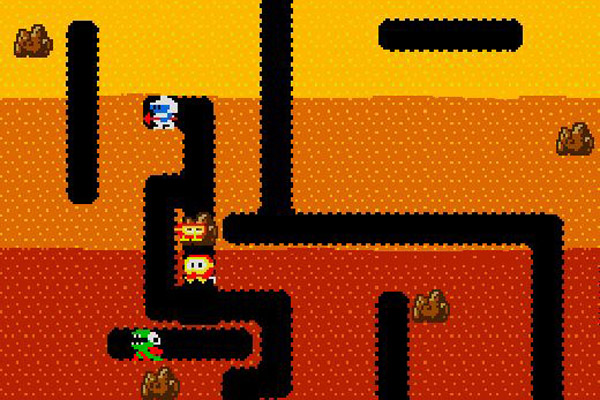
A ongoing series of mysterious "booms" in the town of Clintonville, Wisconsin (40 miles west of Green Bay) has somewhat inexplicably become national news. Perhaps it's 2012 terror, but—I don't know if this will actually make you feel any better—inexplicable, terrifying explosive noises are actually quite common! Sufficiently common to have their own lingo: scientists refer to them as brontides; a common term in the West is "mistpouffers," likely going back to Belgian phenomena; in upstate New York, "Seneca Guns"; in Haiti, the "gouffre"; in Italy, over 40 names; in Bangladesh, "Barisal Guns"; in Chicago, the "Air and Water Show." Some places, like Lake Seneca and the Ganges Delta, have been living with them since the 1800s.
The bad news: there's a good reason they're mysterious, since in a lot of cases no one has yet explained why they occur. Clintonville, however, may be a bit luckier: one sort-of plausible theory going around is icequakes.
* Lewis and Clark heard mistpouffers in Montana: "the strange noises that can be heard over the Yellowstone Lake may also be brontides, which are low muffled sounds heard especially along seacoasts and over lakes and thought to be earth tremors."
[FWIW, Clintonville is on a small, shallow lake, Pigeon Lake.]
* "Seneca Guns" dates back to James Fenimore Cooper's story "The Lake Gun":
The "Lake Gun" is a mystery. It is a sound resembling the explosion of a heavy piece of artillery, that can be accounted for by none of the known laws of nature. The report is deep, hollow, distant, and imposing. The lake seems to be speaking to the surrounding hills, which send back the echoes of its voice in accurate reply. No satisfactory theory has ever been broached to explain these noises. Conjectures have been hazarded about chasms, and the escape of compressed air by the sudden admission of water; but all this is talking at random, and has probably no foundation in truth. The most that can be said is, that such sounds are heard, though at long intervals, and that no one as yet has succeeded in ascertaining their cause.
"The Lake Gun" was published in 1850, and science still really hasn't come up with a better explanation. When similar "booming noises" were heard near Grand Haven, Michigan in 1951, the explanation was similar:
Although the phenomenon has a name, Eggert found, the experts still speculate about its cause.
Booming noises noted at Seneca lake in New York, he says, were attributed to periodic discharges of gas from the Dundee rock formation.
The gas, expanding as it rose through more than 500 feet of water, was credited with creating a rumble, magnified by the shore.
Another authority wrote:
"It is thought that the slight movement of the rocks, such as would be inaudible under ordinary circumstances, may give rise to noises when the atmospheric vibrations are re-inforced in some way by the configuration of the ground.
Professor William H. Hobbs, world-famed University of Michigan geologist, also devoted some research to the cause of brontides.
Hobbs' theory was that certain types of rock layers could transmit slight earth movements into sound waves.
* In 1977 and 1978, mysterious booms throughout the East Coast scared so many people that President Carter got involved. The military blamed supersonic aircraft, and in the United States, the booms stopped. But they continued in Canada—one, in Bell Island off Newfoundland, damaged houses and killed chickens. The theory, according to a CBC documentary? SUPER LIGHTNING (the Newfoundland accents are also amazing):
[Parts two and three are on YouTube.]
* The most recent theory going around about Clintonville is icequakes, or cryoseisms. It's pretty simple: fast temperature changes lead to rapid underground freezes or thaws. They're not uncommon in the Midwest and Northeast; last year, icequakes hit Indiana and Ohio, resulting in booms similar to the ones heard in Clintonville:
Late at night, once again hovering over the keyboard, I heard a loud "boom" and felt our house shake. My wife called out "What was that?" With temperatures hovering near zero a quick check out side revealed nothing. No ice or snow had sloughed off the roof, no tree limbs had fallen, and no vehicle had hit the house. We had been hearing sporadic noises for the past couple of days. I had thought that the swing in temperatures was causing the house to creek. Imagine my surprise when the local TV news reported the next morning that a series of frost quakes, or cryoseisms, had been reported in central Indiana and western Ohio. Frost quakes are the result of the rapid movement of moisture saturated soils subjected to extremely cold temperatures. As the soil rapidly contracts it reaches the threshold of cohesion and crack! A "mini-quake" occurs.
The quake, or cryoseism as it’s known in scientific circles, occurs when moisture soaks into the soil and a quick freeze causes a sudden, even violent expansion and contraction. Darke County’s 911 director Brandon Redmond said the quakes erupted for eight hours Thursday, starting at 1 a.m. The heaviest reports were between 5:30-7:30 a.m.
It's not yet a definitive explanation. Icequakes, or frost quakes, are associated more (almost exclusively, from what I can tell) with freezing than thawing. There has been rapid temperature change in Clintonville, but it was from cold to warm, and that was a couple weeks ago. Then again, they're not very well understood, either.
Until more information comes out of Clintonville, the "Song of the Seismologist" is about the best we can do:
The tremors come, the tremors go,
They love the wintry weather,
With periods fast and periods slow—
Perplexing altogether.
But what care I, the seismist bold,—
I fear no complications
Each novel fact I easily fold
Within my cooked equations.


